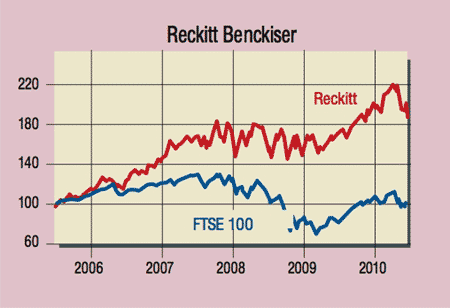
It’s the Holy Grail. The share that you can depend on through thick and thin, generating income and growth long after rivals have run out of juice. But does it exist? And if so, how do you find it?
Bottom up works best
There are two basic ways to pick a share: ‘value’ or ‘momentum’. Value investors use ratios to analyse company accounts and sort the wheat from the chaff. Momentum investors simply chase trends – buying rapidly rising shares and shorting those that are crashing. This can be effective, but you need to be pretty active as it involves timing the market.
We prefer value investing – the idea that as long as you buy a stock when it’s cheap, the market will eventually catch up and push the price higher. But as Jeremy Grantham of US fund management group GMO points out, a strict focus on traditional ‘value’ stocks can sometimes let you down.
When ratios let you down
Ratios are the cornerstone of many value-investing approaches. Key ratios include the price to earnings (p/e – the current share price divided by one year’s earnings), the price to book (p/b – the current share price divided by the balance-sheet value of net assets per share) and the dividend yield (the current dividend as a percentage of the current share price). A low p/e, low p/b and a high yield are all key buy signals.
But as Grantham points out, there’s a problem. A company that looks cheap can just get “cheaper and cheaper” before it “ceases to exist”. As Grantham notes, for some investors a low p/e and p/b are the market’s way of saying that “these are the assets in which I have the least trust”. Such ‘value traps’ can be lethal in a major downturn. “Normally, a cheap company with lots of assets and a high yield outperforms in a bear market because it’s propped up by the yield, which gets higher and higher as its price goes down,” says Grantham. But in a severe recession or depression, dividends get cut, and many companies that were apparently cheap just end up going bust.
For example, had you bought what looked like the most expensive stocks on a p/b basis after the 1929 crash, you’d have needed the market to go up six times after it finally bottomed in 1932, just to get back to evens. That’s pretty poor.
But had you been holding the cheapest stocks – those with the lowest p/bs – they’d have had to rise 14.3 times. In other words, the ‘value’ stocks got hit much harder than apparently ‘expensive’ ones.
Cheap versus “usefully cheap”
And “cheap” isn’t the same as “usefully cheap”, says Grantham. You have to look at the gap between the highest and the lowest p/b stocks on the market. In the 2000 tech bubble, for example, “the range between the p/b of the market favourites and pariahs was very, very wide”. When the range is that wide, “cheap, contrarian stocks can make you a fortune”.
But here’s the rub. Once everyone cottons on and starts to buy “cheap” stocks, the range between the highest and lowest p/b narrows sharply. Then making money from the traditional value approach becomes much harder – in effect, traditional ‘value’ stocks become expensive relative to the rest of the market.
For example, says Grantham, a study of the S&P 500 shows that from 1984 “you made no extra money for 19.5 years” for taking the risk of buying unloved stocks. In short, “you were paid absolutely nothing for carrying lower fundamental quality”. This was particularly the case in 2006, “when p/b reached its maximum overvaluation” – ie, the gap between low p/b and high p/b was at its narrowest. The result was a “50-year flood for p/b, p/e and value managers in general”. The conclusion? “Low p/b and p/e stocks can only outperform when they are priced to do so.”
The solution – quality
So what stocks should you be buying? Here’s where that elusive word ‘quality’ comes in. As Warren Buffett has said, you don’t just want cheap stocks – you want good cheap stocks. For a long-term investor this is a stock that can offer a “high and stable return” on equity.
And the sorts of companies that can do this are those that can “set their own prices” – in other words, big blue-chip franchises, such as Coca-Cola or Microsoft. They may never get hugely cheap on a p/b basis, but such stocks have outperformed the S&P 500 by around 40% since 1965, says Grantham.
But how do you find these companies? Joel Greenblatt of Gotham Partners likes stocks offering a consistently high return on capital employed. Low gearing (debt-to-equity finance) is a big help too, as it minimises the risk that interest payments will take a chunk out of shareholder returns. It also gives the firm the financial flexibility to seize new opportunities – recessions often throw out chances to grab market share as competitors fall by the wayside.
What to buy
Grantham’s screen throws out consumer healthcare products stalwart Johnson & Johnson (NYSE: JNJ) on a p/e of 12.6 and a yield of 3.67 with a 2009 reported ROCE of around 13%. However, we also like household products firm Reckitt Benckiser (LSE:RB) on a p/e of 15 and a yield of 3.21% with a 2009 ROCE of 22%.